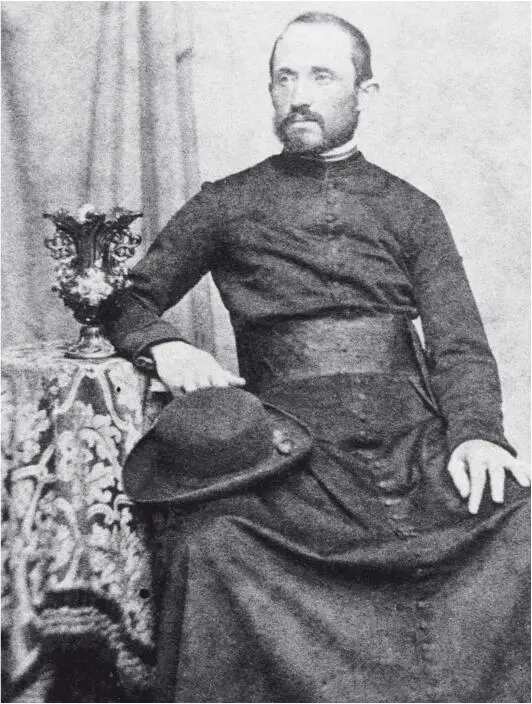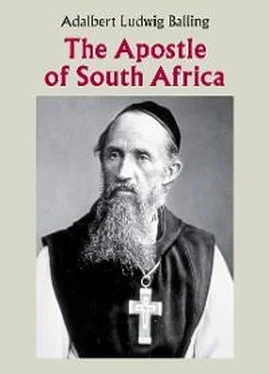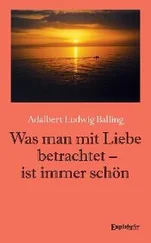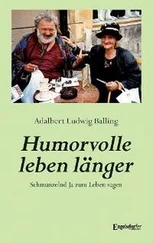III.
Pilgrimage to the Holy Land
Sightseeing in Egypt. Farewell Letters to Friends
Fr. Pfanner was still waiting for a reply from Brixen. The bishop was a former seminary professor of his and took his time, since he knew him well.
Meanwhile, the Severin Association of Vienna was looking for a priest to lead a group of pilgrims on a tour of the Holy Land. The advertisement was a heaven-sent for Fr. Pfanner. He immediately applied and being just as promptly accepted, began to make preparations. First he ordered a proper saddle from the workshops of Lepoclava, because Arab saddles, as he was told by travelers to the Near East, were sheer torture for Europeans. To the Sisters, however, he did not breathe a word about his plan to become a Trappist. They thought that he wanted to improve his knowledge of Scripture by going to the land of Scripture. But to his bishop to whom he wrote a second time he did confide that he wished to see the Lord’s homeland before burying himself in a Trappist monastery.
The group he was to guide met at Trieste. There he was given his official appointment and all the faculties he needed as president. Apparently, the organizers had been told that he spoke Italian and a little Arabic. Above all, they seemed to have known that he was not a coward. The group was mixed and manageable. It included three priests. One of them, a teacher of Religion at a gymnasium in Bohemia, he appointed treasurer. Then there was a rural pastor in his seventies, also from Bohemia, and an assistant priest from the Diocese of Regensburg. A young probationary judge from Wuerzburg was made secretary. But a Hungarian pensioner proved such a pain in the neck that “we would have been better off without him”. No one in the group had ever been outside his home or traveled. They boarded a steamer destined for the southeastern ports. As soon as it put to sea president Pfanner, like most other passengers, became seasick. “Only my secretary was spared the scourge!” They traveled via Corfu to Rhodes and Cyprus and from there to Lebanon.

Wendelin Pfanner (Confessor to Sisters at Agram, Croatia) as pilgrim’s guide to the Holy Land
In Beirut, he bought a riding crop to keep away “the crooks and rogues” who lay in wait at every city gate to pillage and plunder unsuspecting pilgrims, not simply demanding but extorting bakshish . He did not hesitate to lash out at them, commenting that “nobody would have suspected this whip swinging commander to be a kid-glove confessor to Sisters.” The group considered itself fortunate to have him.
Haifa was the first port of call in the Holy Land where they were allowed to go ashore. They climbed Mount Carmel and afterwards sailed to Jaffa (Joppa, Tel Aviv-Jafo) and there disembarked for good. It was a one of a kind experience: Arab porters stood ready to carry them like sheaves through the churning sea, after which they set them down on the beach. Once ashore, they were on “holy ground”. They knelt to kiss it.
The seasickness was gone as if it had never existed. So the tour of the Holy Land could begin.
After his return to Agram, Fr. Pfanner described his experiences in a letter to his mother and siblings, dated 4 June 1863:
“As president of the pilgrimage, I wasted precious time on official errands and visits besides acting as interpreter for my group. During Holy Week, I celebrated Mass in the very place where Jesus was nailed to the cross. I was so moved that for a moment I could not continue with the Prayers at the Foot of the Altar. On Holy Thursday, I had the honour of being one of twelve pilgrims who had their feet washed by the Patriarch of Jerusalem. Yes, this prelate of supreme rank washed, dried and kissed my feet! He also gave everyone a small cross, carved from the wood of the olive trees which still grow in the Garden of Gethsemane where Jesus suffered his agony before he died. On Good Friday, we visited the Via Dolorosa in Jerusalem. We kissed each Station but otherwise felt most unworthy to be without a cross in a place where Jesus carried such a heavy cross! The following night, in the Church of the Holy Sepulcher, we listened to the seven sermons traditionally preached there in seven languages: Italian, New Greek, Polish, French, German, Arabic and Spanish. At five o’clock on Easter morning I was allowed to say Mass in another special place: the very tomb in which Jesus was buried … It was a rare opportunity which not even a high ranking Franciscan enjoys who perhaps spends his entire life in Jerusalem, because priority is always given to visiting personalities.”
When the Easter celebrations were over the group rode to Bethany where Lazarus had been buried and raised to life. Then they continued to the place in the desert where Jesus had fasted for forty days. From there they proceeded to Jericho and the Jordan River. They pitched their tent on the bank and went into the water to fill their bottles. Afterwards they followed the Jordan to the Dead Sea and climbed the hill country to see the Church of the Manger and the Shepherds’ fields at Bethlehem. At Hebron, which they visited next, they remembered Abraham, and at St. John-in-the-Mountain, the Holy Baptist.
So far their journey had been without incident, but on this last leg the president’s horse stumbled. But for the fraction of an inch he would have plunged into a ravine. In another instance the horse did throw him in full gallop, but both times he and the horse got away with a bruise and a shock.
After a brief sojourn in Jerusalem, the president led his group to Sichem to see Jacob’s Well, then up Mount Gerizim and on to Nazareth. Later they climbed Mount Tabor from where they descended to the Sea of Galilee, in order to continue along a road leading to the Hill of the Beatitudes and the plain where Jesus multiplied the loaves. Via Cana in Galilee, renowned for the Lord’s first miracle, they returned to the sea. There they made a cash check.
Abbot Francis:
“Before we left Palestine, we distributed the remaining money. Everyone got back 93 guilders. Latest now they realized that their president had managed the tour to their benefit. They had saved money though they saw more than most other pilgrims … Now everyone was free to choose his own way home, make his own plans and manage his own funds.”
Fr. Pfanner decided to return via Egypt. Would anyone like to come along? Most did and promptly re-elected him leader.
In the Land of the Pharaohs
Embarking at Haifa, they were told that the crossing to Alexandria would take twenty-eight hours. They braced themselves. But then the sea changed; it became so rough and the going so slow that it took them more than twice the length of time: sixty-eight hours! A nightmare for the leader!
Abbot Francis:
“Sailing was torture. I was so seasick that I vowed to myself a hundred times over never again to set foot on a boat. I must laugh as I write this. What good are man’s plans if God makes his own? The proverb that man proposes and God disposes couldn’t be more accurate.”
Yes, God has his own plans. As in Pfanner’s case, so he writes straight also with the crooked lines of our own lives. In Alexandria, Fr. Pfanner stood for the first time on African soil. Little did he dream that this was his introduction to a continent where, further in the south, he would labour for twenty-seven years to establish God’s Kingdom!
Cairo was memorable on account of the Pyramids and the Sphinx but also for an unfortunate incident. Shifty porters cut his saddle bag and stole his coat with his journal. Disappointed and angry, he comforted himself with the thought that “as a Trappist I will have no use for either, my coat or my journal”. Leaving the Pyramids, he and his group traveled far “to the place where, according to tradition, Mary and Joseph had stayed in hiding with their beloved Child”. They also visited the “Mary Tree” and “Mary Fountain” which according to legend had offered the Holy Family shelter and water.
Читать дальше













